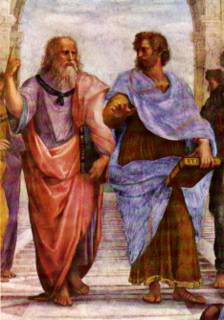We have chosen here to prepare a triplet of entangled particles of the GHZ type. The entanglement has been demonstrated by experiments performed in two orthogonal basis. The procedure can, in principle, operate on larger numbers of particles, opening the way to new fundamental tests of quantum theory.
So I am deep in thought, and the images of the neuron's capabilties, have me picturing the possibilties that could have been produced in the synapse. That the quantum computer would have said that it is directlty and photonically, linked to a wide range of possibilities in the developing ideas of the cosmo?
Okay, if that is too much, then think of Trackbacks, pictures with direct links, or paragraphs, directly linked to sites. This is what we want to create as a versatile function on the internet? Whie images are sparked in mind, where did they arise from, or some profound thought held in perspective of the Rainbow by Feynman, about what is beautiful about the work these physicists like to do. Their motivations spectrumly enhanced, about what it is about the nature of reality?
But it is more then this I think. Imagine using a feather to rotate a sphere, and the effect of the superfluid, to produce these strange anomalies of perception on superfluids. Okay, I am loosing myself here.
Do we selectively ignore other models from artificial intelligence such as Zadeh's Fuzzy Logic? This is a logic used to model perception and used in newly designed "smart" cameras. Where standard logic must give a true or false value to every proposition, fuzzy logic assigns a certainty value between zero and one to each of the propositions, so that we say a statement is .7 true and .3 false. Is this theory selectively ignored to support our theories?
Part of the struggle for me is, how we see, ingoing and out going states, and the possibilities that may arise? How in computation ideology, might raise it's head, as a third choice.
Now I am not certain here, and I open myself up to speculation, because I would like to see how such states, like those leading to "microstate blackholes" which would see the dissipation, resulted in the ability of all those particles to be mapped. In such a way, that the "onion skin or glast," interacts calorimetrized, colliderized, and with, cosmological high energy particles have by it's very act said, the result is, that the early universe, is this way, and the interacting measure, is the result of today? What is this product then?
It might have amounted to a "variation" of the cosmological constant? :)
On the other hand you need to be aware of the maybe most bizarre aspect of quantum mechanics: the fact that our world is only apparently tridimensional, in reality it is formed from two tridimensional worlds that we see superimposed onto each other: everywhere we think we see one point in fact there are two points. An elementary particle (such as an electron) when it rotates around its axis is passes from one part of the world into the other part, as if it would climb on a spiral; when it rotates furthermore it goes back as if the spiral would descend back into the first part of world.
See:

 PLato saids,"Look to the perfection of the heavens for truth," while Aristotle saids "look around you at what is, if you would know the truth" To Remember: Eskesthai
PLato saids,"Look to the perfection of the heavens for truth," while Aristotle saids "look around you at what is, if you would know the truth" To Remember: Eskesthai